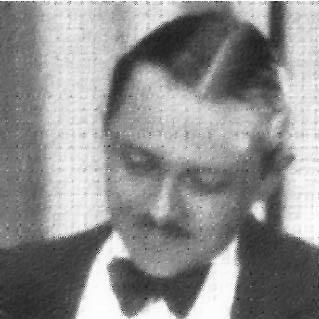
Artist Overview
# Jazz
# Pop
# Blues
Leon Bismark "Bix" Beiderbecke (March 10, 1903 – August 6, 1931) was an American jazz cornetist, pianist, and composer. Beiderbecke was one of the most influential jazz soloists of the 1920s.His solos on "Singin' the Blues" and "I'm Coming, Virginia" (both 1927) demonstrate purity of tone and a gift for improvisation.With these two recordings, as well as others, he helped to define the jazz ballad and foresaw what would become cool jazz in the 1950s."In a Mist" (1927), one of a handful of his piano compositions and the only one he recorded, fused jazz with classical (mainly Impressionist) influences. A native of Davenport, Iowa, Beiderbecke taught himself to play the cornet largely by ear, leading him to adopt a non-standard fingering technique that informed his unique tone.He first recorded with Midwestern jazz ensemble The Wolverines in 1924, after which he played briefly for the Detroit-based Jean Goldkette Orchestra before joining Frankie "Tram" Trumbauer for an extended engagement at the Arcadia Ballroom in St. Louis, also under the auspices of Goldkette's organisation.Beiderbecke and Trumbauer joined Goldkette's main band at the Graystone Ballroom in Detroit in 1926.The band toured widely and famously played a set opposite Fletcher Henderson at the Roseland Ballroom in New York City in October 1926.He made his greatest recordings in 1927.In late 1927, the Goldkette band folded, and after briefly joining bass saxophone player Adrian Rollini's band in New York, Trumbauer and Beiderbecke joined America's most popular dance band: Paul Whiteman and his Orchestra. Beiderbecke's most influential recordings date from his time with Goldkette and Whiteman, although he also recorded under his own name and that of Trumbauer's.The Whiteman period marked a precipitous decline in his health due to his increasing reliance on alcohol, exacerbated by the demands of recording and touring.Treatment for alcoholism in rehabilitation centers, with the support of Whiteman and the Beiderbecke family, failed to stop his decline.He left the Whiteman band in 1929 and in the summer of 1931 he died in his Queens, New York apartment at the age of 28. His death, in turn, gave rise to one of the original legends of jazz.In magazine articles, musicians' memoirs, novels, and Hollywood films, Beiderbecke has been envisaged as a Romantic hero, the "Young Man with a Horn" (a novel, later made into a movie).His life has been portrayed as a battle against such common obstacles as art vs. commercialism, with his death being seen as a martyrdom for the sake of art.Beiderbecke remains the subject of scholarly controversy regarding his true name, the cause of his death, and the importance of his contributions to jazz.